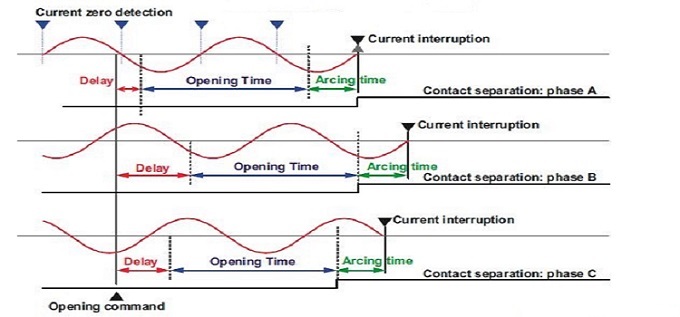
The term controlled opening (de-energization) refers to the technique of controlling the contact separation of each pole of a circuit breaker with respect to the phase angle of the current and thereby controlling arcing times in order to minimize stresses on the components of the power system.To achieve controlled opening, the current through the circuit breaker or a reference voltage is monitored, for example, the controller often detects periodical current zeros for the reference signal. The arcing time for each pole is controlled by setting the instant of contact separation with respect to the current waveform.
The initial opening command is issued randomly with respect to the reference signal
This command is delayed in order to separate the contact of each phase independently (in case of independent-pole operation) when the circuit breaker can secure an optimum arcing time. It can substantially reduce the probability of restrike during consecutive capacitor de-energization or avoid reignition in case of reactor de-energization.



